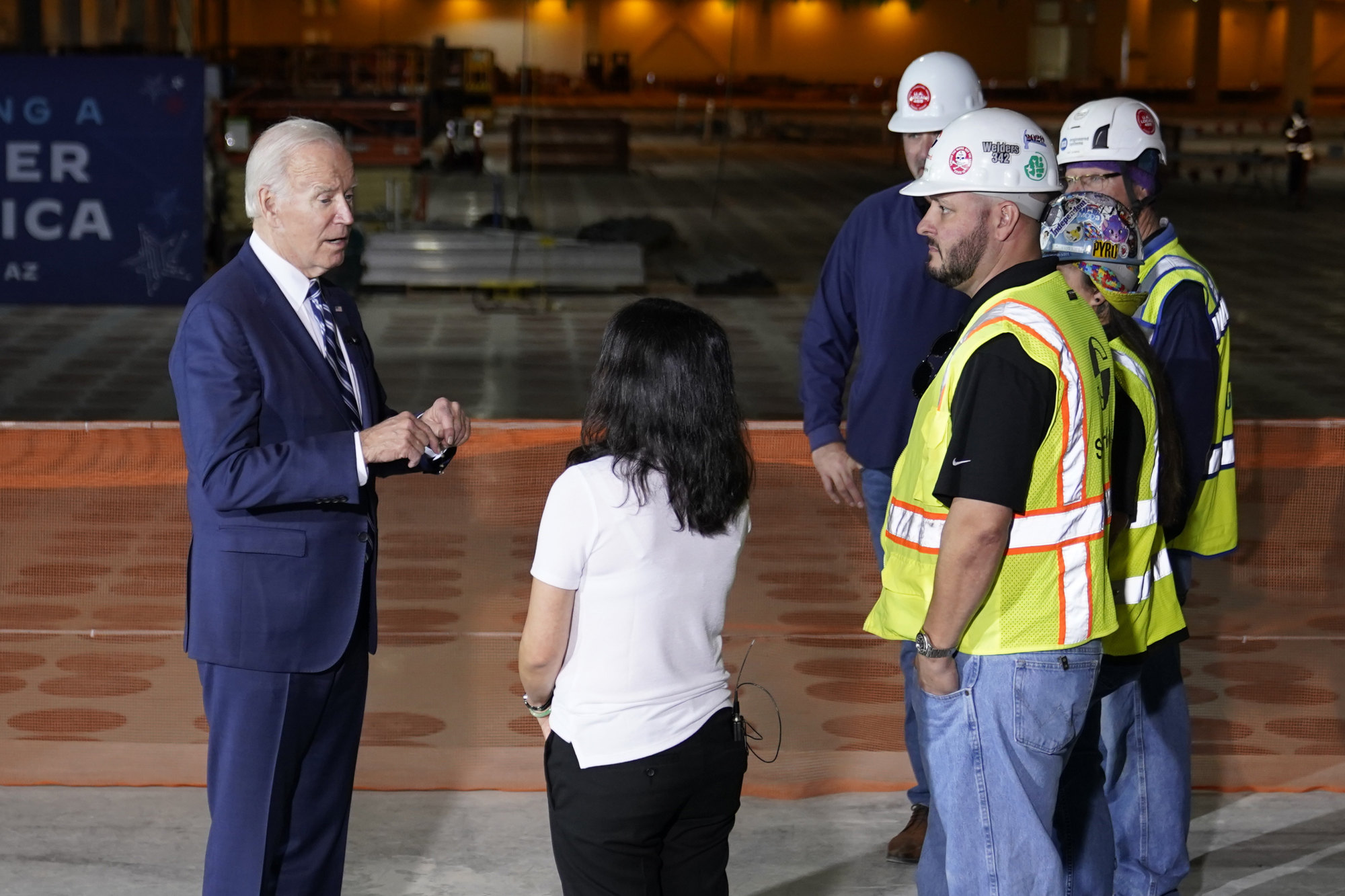Time can make a huge difference. This is certainly true of the US’ stance on industrial policy. Just a few years ago, “industrial policy” was a derogatory term that Washington reserved almost exclusively for China as if it had forgotten that it was a pioneer of the practice.
In the 1980s, the Reagan administration set annual ceilings for Japan’s car exports to the US, and forced Tokyo to accept rules that limited Japanese chip exports while extracting improved US access to the Japanese market.
With the US emerging victorious from the Cold War, Washington saw a reduced need for industrial policy. Meanwhile, it frowned on the countries that adopted the practice, blasting China’s industrial policy as “non-market”.
Some 30 years on, industrial policy is back in fashion in the US. While continuing to censure China, Washington passed the Inflation Reduction Act and the Chips and Science Act in 2022.
Industrial policy is commonly defined as measures taken by a government to shape the economy by targeting specific industries, firms or economic activities through tax incentives, subsidies, protective regulations and research and development support.
China was a latecomer on the scene. Taking its cue from the East Asian countries that transformed their economies through industrial policy, Beijing put in place something of its own in 1986.
China’s industrial policy is similar to that of Japan, South Korea and the European Union, albeit more pervasive. For this reason, it has withstood challenges the US brought before the World Trade Organization.
In contrast, US industrial policy is one of a kind. What sets it apart from the pack is, first and foremost, its purpose. Conventional industrial policy is internally focused, aimed at developing national capacity. However, US industrial policy has, as well as investing in American workers and science, an important additional goal: suppressing competitors, especially those perceived to be narrowing the gap with the US.
The Reagan administration’s “managed trade”, since outlawed, was intended to clamp down on Japanese automobile and semiconductor industries. The exercise was hugely successful, and contributed in no small part to Japan’s three lost decades.
Washington’s industrial policy for semiconductors today is designed to cripple Chinese competition or to ensure the US maintains, as National Security Adviser Jake Sullivan put it, “as large of a lead as possible”.
US industry policy distinguishes itself in another important aspect: approach. The Biden administration says its industrial policy is rooted in national security concerns, and maintains that there is no room for compromise on such matters.
It is easy to see why Washington links its industrial policy with national security: to justify the measures it wishes to take. Consequently, US industrial policy includes extreme measures outside the realm of conventional industrial policy.
The US’ “high fence” around its semiconductor sector, for example, includes export bans, investment curbs and blacklists of competing companies.
On top of an arsenal already swollen with trade, the Swift global payments system and the dollar, Washington is now using industry policy as a weapon to achieve its geopolitical objectives – not unlike an unscrupulous sportsman tripping up a competitor to win a race.
While conventional industrial policy operates behind the border, America’s industrial policy extends its reach beyond US territory, adversely affecting foreign governments and companies. Foreign companies deemed to have violated US sanctions are subject to heavy fines, while foreign nationals on the wrong side of US rules face prison terms.
In an aberration from conventional industrial policy, the US calls for allies and like-minded economies to align against its competitors. The Biden administration has formed a “ Chip 4” alliance with South Korea, Japan and Taiwan, and seeks to set up a “critical minerals buyers club” with the European Union and the Group of 7.
It pressured Japan and the Netherlands into enforcing semiconductor export curbs against China, while prohibiting funding recipients under the Chips and Science Act from expanding capacity there. Moreover, the US is pushing “friend-shoring” to isolate China.
In addition, US industrial policy is likely to have contravened global trade rules. China has filed a suit with the WTO over the US’ chip export bans. Some in the EU have threatened WTO action against the US over an Inflation Reduction Act subsidy scheme that excludes electric vehicles made outside North America.

To allay similar Japanese concerns about the implementation of the Inflation Reduction Act, the Biden administration concluded an agreement with Tokyo on critical minerals for electric vehicle batteries, which was presented as a sort of free-trade agreement. But such narrow sectors “do not count as a free trade area”, according to Inu Manak, a trade policy expert at the Council on Foreign Relations.
Washington’s industrial policy has serious consequences for the world. It is creating new trade barriers. Market distortion at its worst, it threatens to dismantle the current global supply chains, which would lead to substantial inefficiency and loss of economic output.
Some of the effects of US industrial policy are already evident in the semiconductor sector, where it is no longer possible to freely source or sell raw materials, products, manufacturing machines or technology. As Taiwan Semiconductor Manufacturing Company (TSMC) founder Morris Chang put it, “in the chip sector, globalisation is dead”.
President Joe Biden has stressed on numerous occasions the necessity of US global leadership. However, on industrial policy at least, the world would be much better off without it.
Source : SCMP









